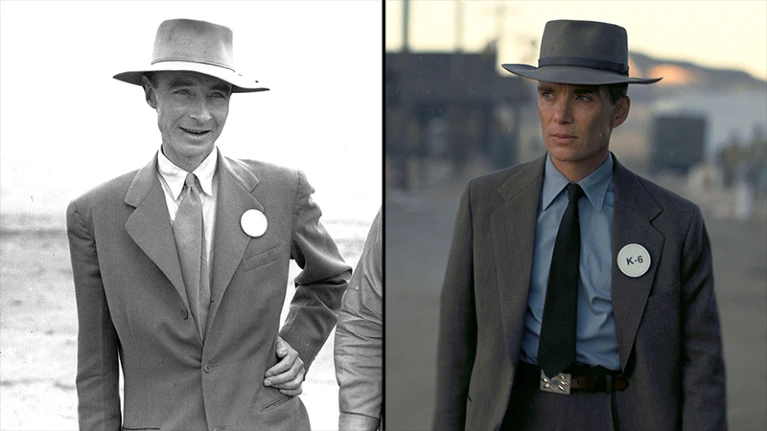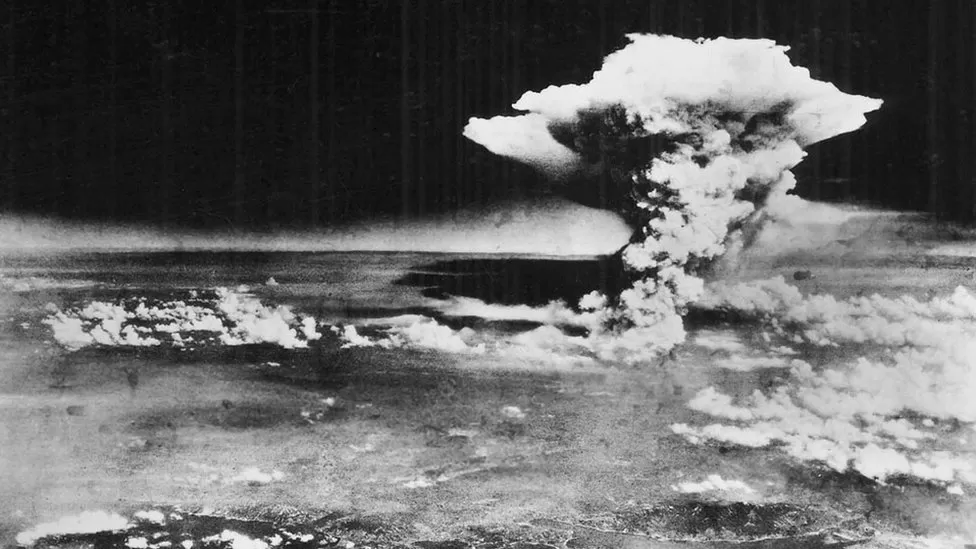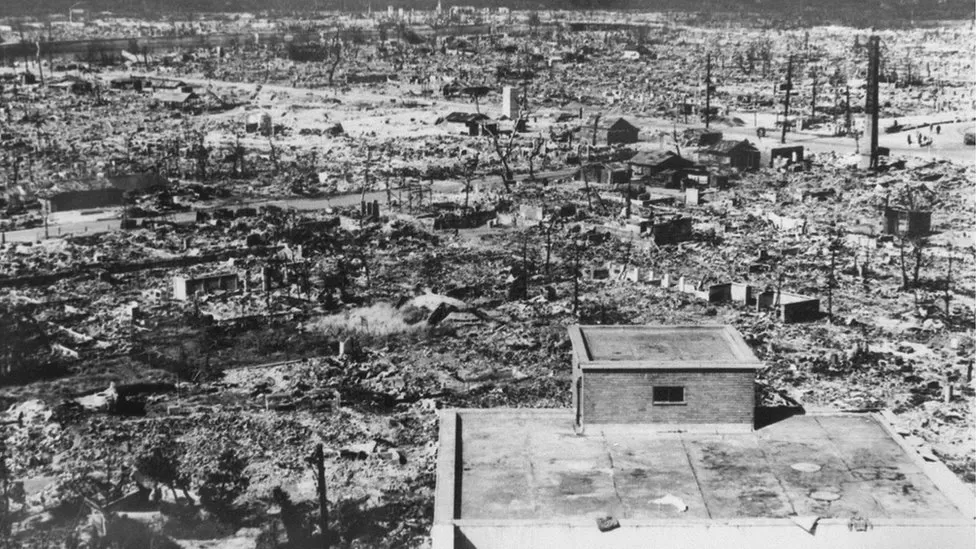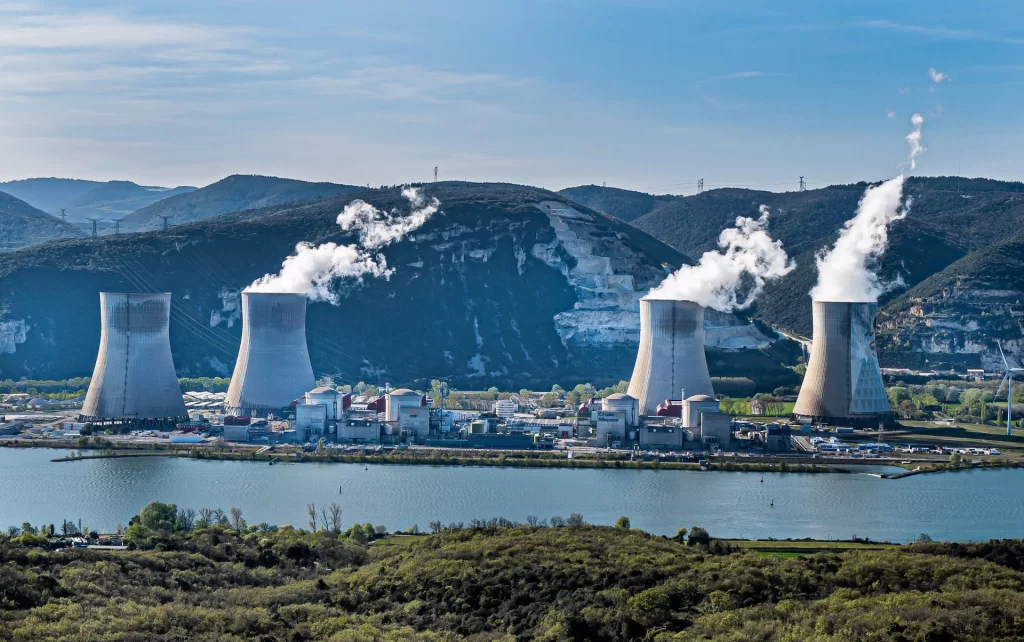Christopher Nolan’s highly acclaimed “Oppenheimer” delves into the life of J. Robert Oppenheimer, the scientist behind the creation of the atomic bomb. Inspired by the book “American Prometheus”, the story draws parallels to the Greek myth of Prometheus, who gave fire to humanity and endured suffering in return. Although the atomic bomb’s destructive potential remains a dark chapter in history, it also led to the discovery of nuclear energy. As we immerse ourselves in the epic portrayal of Oppenheimer’s life, let’s explore the science behind atomic bombs, the aftermath of their use, and how this destructive force ultimately paved the way for the revolutionary concept of nuclear energy that holds the potential to shape our world’s future.

The Marvel of Nuclear Energy
Atomic bombs tap into the immense energy locked within atomic nuclei, a process known as nuclear fission. A pivotal experiment by German scientists Otto Hahn and Fritz Strassman, where they bombarded an atom of Uranium with a neutron, was the first demonstration of the feasibility of releasing this energy, setting the stage for harnessing nuclear energy.
The era of World War II witnessed an intense race among several countries, including Nazi Germany, to develop atomic bombs. Ultimately, the Manhattan Project, led by General Leslie Groves and with significant contributions from J. Robert Oppenheimer and others, successfully created the first atomic bomb.
Nuclear fission, central to atomic bombs and nuclear reactors, involves splitting the nuclei of heavy atoms like Uranium-235 and Plutonium-239. When a neutron strikes the nucleus of a fissile atom, it becomes unstable and divides into two smaller nuclei, releasing energy and additional neutrons. This sets off a chain reaction, where released neutrons trigger further fission reactions, leading to a powerful exponential release of energy.
For a self-sustaining chain reaction, a critical mass of fissile material must be brought together. Plutonium-239 requires a smaller critical mass than Uranium-235, making it a more cost-effective choice for bomb-making. When a single neutron collides with Uranium-235, it splits to release energy and three additional neutrons, initiating the chain reaction. In a fraction of a second, this process generates an explosive force far more potent than conventional explosives.

Types of Atomic Bombs
The United States developed two types of nuclear bombs during the Manhattan Project.
The “Little Boy”, dropped on Hiroshima on August 6, 1945, utilized Uranium-235 and operated as a gun-type bomb. Its Uranium core was shot into a larger Uranium target, leading to an uncontrolled fission reaction and a devastating explosion, resulting in over 100,000 casualties.
On August 9, 1945 “Fat Man” was dropped on Nagasaki, employing Plutonium-239 as its fissile material and operating as an implosion-type device. The bombs Plutonium core was compressed to increase its density, resulting in the fission reaction that caused approximately 70,000 deaths.
Human and Environmental Aftereffects
The bombings of Hiroshima and Nagasaki left a trail of destruction, with immediate and long-term impacts on human life. The intense heat vaporized human tissue and destroyed structures, leaving survivors with radiation sickness and long-term health issues. Many of these effects lingered for decades after the bombing with devastating physical and psychological trauma. The environment, too, suffered irreparable damage, with the birth of the Anthropocene epoch marked by the first nuclear blast, altering geological deposits worldwide. However, it is essential to recognize the potential of nuclear energy beyond destruction.
In the 1950s, the stigma of the atomic bomb influenced public perception of nuclear power. However, we must recognize that while nuclear energy had the capability to cause destruction, it also possesses unimaginable potential to provide a sustainable energy solution for our planet. Scientists in the 1940s had the knowledge to pursue nuclear energy reactors but opted to work on building a bomb. The movie “Oppenheimer” eloquently portrays this ethical dilemma faced by scientists like Niels Bohr. This choice delayed the development of nuclear reactors that could have provided a sustainable energy solution much earlier.

Transition from Destruction to Creation – Nuclear Energy
Despite the horrors of atomic bombs, the discovery of nuclear energy opened new horizons for humanity. Today nuclear fission reactions offer a reliable and clean energy solution. Forced, splitting of Uranium-235 fuels nuclear reactors, generating heat that turns water into steam. The steam drives turbines, generating electricity to power our homes and industries. Nuclear poison rods composed of Xenon that absorb the nuclear fission products are inserted to control the reaction in these reactors. The more rods present, the better we can regulate this process.
Unlike fossil fuels, nuclear energy is environmentally friendly, as it produces no pollutants or greenhouse gases that contribute to climate change. Abundant Uranium resources make it a sustainable option for future generations. Nevertheless, responsible disposal of radioactive byproducts is essential to safeguard the environment and human health. Deep underground burial in geologically stable locations is a key approach to managing waste effectively.

Nuclear Fusion: The Sun’s Power Source
Nuclear fusion, the source of nuclear energy in the sun where hydrogen atoms fuse to produce helium also releases a large amount of energy. Despite its potential, harnessing nuclear fusion for practical energy production remains a complex challenge.
Balancing Nuclear Energy: Benefits and Risks
Nuclear energy is a potent solution to address global energy demands while combating climate change. However, responsible management of radioactive waste is vital due to its potential health and environmental hazards. Stringent regulations ensure safe disposal, making nuclear energy a sustainable and clean source. Arguments against nuclear energy often exploit fears surrounding historical incidents like the atomic bomb, but our progress in technology and research enables cost-effective and efficient utilization of nuclear power. Advances in reactor design and waste disposal offer promising solutions. While incidents like Chernobyl and Fukushima Daiichi can cause anxiety, they are rare exceptions. Over the past 70 years, nuclear power has proven to be a safer energy source, with declining accident rates. Robust research and innovation continue to identify risk factors and mitigation strategies. Trusting in the science and expertise of nuclear energy practitioners will lead us toward a cleaner and safer energy future.
Ultimately, the Manhattan Project, led by General Leslie Groves and with significant contributions from (coordinated by???) J. Robert Oppenheimer, successfully created the first atomic bomb.
* No mention of U.S., could add a highly qualified team of physicists there were quite a lot of people.
Very well explained
Very interesting…it give another vision about the nuclear ☢️ energy
Excellent article! Loved the parallels drawn between the destructive potential of nuclear power! A very well researched and we’ll written. I would love know how the world regulates the use of nuclear power. Considering we have countries around the world whose policy makers are more volatile.